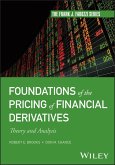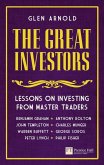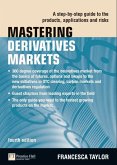The Financial Times Handbook of Financial Engineering clearly explains the tools of financial engineering, showing you the formulas behind the tools, illustrating how they are applied, priced and hedged.
All applications in this book are illustrated with fully-worked practical examples, and recommended tactics and techniques are tested using recent data.
Product Description
The Financial Times Handbook of Financial Engineering clearly explains the tools of financial engineering, showing you the formulas behind the tools, illustrating how they are applied, priced and hedged.
All applications in this book are illustrated with fully-worked practical examples, and recommended tactics and techniques are tested using recent data.
Backcover
Whether you are an experienced hedge fund manager or new to the world of finance, this comprehensive handbook identifies all the things you really need to know about minimising financial risk and how to put the tools into practice.
The Handbook of Financial Engineering in an introduction to the devices used in managing financial risk. It explains the theory behind each instrument and shows you how they are applied, priced and hedged All applications are illustrated with fully-worked examples
Through its clear and informative style, this fully updated edition of the Financial Times Handbook of Financial Engineering:
Explains what financial engineering is and discusses the nature of risk
Gives you a clear overview of the cash markets
Examines forward exchange rates, FRAs and financial futures
Explores swaps, options and interest rates
Tells you how to manage all types of financial risk (including currency, interest-rate, equity, commodity and credit risk)
Includes new chapters on CDS, CDX, iTraxx and CDOs
PART ONE ‑ TOOLS
Chapter One Introduction
1.1 Forty years of evolution
1.2 What is financial engineering?
1.3 The nature of risk
1.4 Financial engineering and risk
1.5 Layout of this book
Chapter Two The Cash Markets
2.1 Overview of financial markets
2.2 The foreign exchange market
2.3 The money markets
2.4 The bond markets
2.5 The equities markets
2.6 The commodities markets
2.7 Cash instruments vs. derivatives
2.8 Capital adequacy requirements
Chapter Three Forward Rates
3.1 Forward exchange rates
3.2 Forward interest rates
3.3 Do forward rates predict future spot rates?
3.4 Spot and forward rates in practice
Chapter Four FRAs
4.1 What is an FRA?
4.2 Definitions
4.3 Terminology
4.4 The settlement process
4.5 Hedging with FRAs
4.6 Pricing FRAs
4.7 Behaviour of FRA prices
Chapter Five Financial Futures
5.1 A brief history of futures markets
5.2 What is a financial future?
5.3 Futures trading – from pits to screens
5.4 Buying and selling
5.5 The clearing mechanism
5.6 Futures margins
5.7 Physical delivery versus cash settlement
5.8 Futures and cash markets compared
5.9 The advantages of futures
Chapter Six Short-Term Interest Rate Futures
6.1 Definitions
6.2 STIR contracts pricing
6.3 Basis
6.4 Convergence
6.5 Behaviour of futures prices
6.6 Basic hedging example
6.7 Short-term futures contracts compared
6.8 Comparison of futures and FRAs
6.9 Spread positions
Chapter Seven Bond and Stock Index Futures
7.1 Definition of bond futures contracts
7.2 The cheapest to deliver bond
7.3 Cash and carry pricing for bond futures
7.4 The implied repo rate
7.5 The delivery mechanism
7.6 Basic hedging with bond futures
7.7 Stock indices and stock index futures
7.8 Definition of stock index futures contracts
7.9 Advantages of using stock index futures
7.10 Cash and carry pricing for stock index futures
7.11 Stock index futures prices in practice
7.12 Turning cash into share portfolios and share portfolios into cash
Chapter Eight Swaps
8.1 Definition of interest rate and cross-currency swaps
8.2 Development of the swap market
8.3 Interest rate swaps
8.4 Non-standard interest rate swaps
8.5 Overnight indexed swaps
8.6 Cross-currency swaps
8.7 Basic applications for swaps
8.8 Asset swaps
8.9 CMS and CMT swaps
8.10 Inflation swaps
8.11 Equity swaps
8.12 Commodity swaps
8.13 Volatility and variance swaps
8.14 Exotic swaps
8.15 ISDA documentation
8.16 Changes in market infrastructure after the credit crisis
Chapter Nine Pricing and Valuing Swaps
9.1Principles of swap valuation and pricing
9.2 Discount factors and the discount function
9.3Calculating discount factors from swap and forward rates
9.4 Generating the discount function
9.5 Relationship between zero, swap, and forward rates
9.6 Valuation and pricing of interest rate swaps
9.7 Valuation and pricing of currency swaps
9.8 Cancelling a swap
9.9 Hedging swaps with futures
9.10 The convexity correction
9.11 Credit risk of swaps
9.12 Collateralised vs. Non-collateralised swaps
9.13 LIBOR-OIS discounting
Chapter Ten Options – Basics and Pricing
10.1 Why options are different
10.2 Definitions
10.3 Options terminology
10.4 Value and profit profiles at maturity
10.5 Pricing options
10.6 The behaviour of financial prices
10.7 The Black Scholes model
10.8 The binomial approach
10.9 The Monte Carlo approach
10.10 Finite difference methods.
Chapter TenA Options – Volatility and the Greeks
10A.1 Volatility
10A.2 Volatility smiles and skews
10A.3 The VIX
10A.4 Value profiles prior to maturity
10A.5 How options behave
10A.6 Delta hedging
Chapter Eleven Options - From Building Blocks to Portfolios
11.1 The building block approach
11.2 Option spreads ‑ horizontal, vertical, and diagonal
11.3 Volatility structures
11.4 Arbitrage structures
Chapter Twelve Interest Rate and Exotic Options
12.1 Why interest rate options are different
12.2 Caps, floors, and collars
12.3 Swaptions
12.4 Cancellable and extendible swaps
12.5Pricing interest rate options
12.6 Compound options
12.7 Exotic options
12.8 Path-dependent options
12.9 Digital options
12.10 Multivariate options
12.11 Other exotic options
12.12 Pricing exotic options
12.13 Price comparisons between exotic options
12.14 Embedded options
Chapter Thirteen Introducing Credit Derivatives
13.1 Development of the credit derivatives market
13.2 Motivations for using credit derivatives
13.3 Introducing Credit Default Swaps (CDS)
13.4 Market conventions
13.5 Credit events and Determination Committees
13.6 Capital structure, recovery rates, reference and deliverable obligations
13.7 Settlement methods and auctions
13.8 Other aspects of CDS
Chapter ThirteenA CDS Pricing and Credit Indices
13A.1 A Simple CDS Pricing Model
13A.2 Obtaining Default Probabilities
13A.3 Developing a Multi-period Framework
13A.4 The ISDA CDS Standard Model
13A.5 Bootstrapping Default Probabilities
13A.6 8Calculating Up-front Payments
13A.7 Mark-to-market and CDS Valuation
13A.8 PV01 and SDV01
13A.9 How Credit Indices Developed
13A.10 The CDX and iTraxx Credit Indices
13A.11 Market Quotations and Statistics
13A.12 Other Credit Indices
13A.13 Index Tranches
PART TWO ‑ TECHNIQUES
Chapter Fourteen Applications for Financial Engineering
14.1 Applications of financial engineering
14.2 Sources of financial risk
14.3 Accounting and economic risk
14.4 Defining hedging objectives
14.5 Measuring hedge efficiency
14.6 The finance division as a profit centre
Chapter Fifteen Managing Currency Risk
15.1 Forwards and futures solutions
15.2 Options are chameleons
15.3 How FX options are different
15.4 The scenario
15.5 Comparing hedging strategies
15.6 Basic option hedges
15.7 Selling options within a hedging programme
15.8 Collars, range-forwards, forward-bands, cylinders
15.9Spread hedges
15.10 Participating forwards
15.11 Ratio forwards
15.12 Break-forwards, FOXs, forward-reversing options
15.13 Flexi-forwards
15.14 Using exotic options
15.15 Selling options outside a hedging programme
15.16 Dynamic hedging
15.17 Which strategy is best?
Chapter Sixteen Managing Interest-Rate Risk using FRAs, Futures and Swaps
16.1 Using FRAs
16.2 Using short-term interest rate futures
16.3 Calculating the hedge ratio
1
The Financial Times Handbook of Financial Engineering clearly explains the tools of financial engineering, showing you the formulas behind the tools, illustrating how they are applied, priced and hedged. All applications in this book are illustrated with fully-worked practical examples, and recommended tactics and techniques are tested using recent data.
All applications in this book are illustrated with fully-worked practical examples, and recommended tactics and techniques are tested using recent data.
Product Description
The Financial Times Handbook of Financial Engineering clearly explains the tools of financial engineering, showing you the formulas behind the tools, illustrating how they are applied, priced and hedged.
All applications in this book are illustrated with fully-worked practical examples, and recommended tactics and techniques are tested using recent data.
Backcover
Whether you are an experienced hedge fund manager or new to the world of finance, this comprehensive handbook identifies all the things you really need to know about minimising financial risk and how to put the tools into practice.
The Handbook of Financial Engineering in an introduction to the devices used in managing financial risk. It explains the theory behind each instrument and shows you how they are applied, priced and hedged All applications are illustrated with fully-worked examples
Through its clear and informative style, this fully updated edition of the Financial Times Handbook of Financial Engineering:
Explains what financial engineering is and discusses the nature of risk
Gives you a clear overview of the cash markets
Examines forward exchange rates, FRAs and financial futures
Explores swaps, options and interest rates
Tells you how to manage all types of financial risk (including currency, interest-rate, equity, commodity and credit risk)
Includes new chapters on CDS, CDX, iTraxx and CDOs
PART ONE ‑ TOOLS
Chapter One Introduction
1.1 Forty years of evolution
1.2 What is financial engineering?
1.3 The nature of risk
1.4 Financial engineering and risk
1.5 Layout of this book
Chapter Two The Cash Markets
2.1 Overview of financial markets
2.2 The foreign exchange market
2.3 The money markets
2.4 The bond markets
2.5 The equities markets
2.6 The commodities markets
2.7 Cash instruments vs. derivatives
2.8 Capital adequacy requirements
Chapter Three Forward Rates
3.1 Forward exchange rates
3.2 Forward interest rates
3.3 Do forward rates predict future spot rates?
3.4 Spot and forward rates in practice
Chapter Four FRAs
4.1 What is an FRA?
4.2 Definitions
4.3 Terminology
4.4 The settlement process
4.5 Hedging with FRAs
4.6 Pricing FRAs
4.7 Behaviour of FRA prices
Chapter Five Financial Futures
5.1 A brief history of futures markets
5.2 What is a financial future?
5.3 Futures trading – from pits to screens
5.4 Buying and selling
5.5 The clearing mechanism
5.6 Futures margins
5.7 Physical delivery versus cash settlement
5.8 Futures and cash markets compared
5.9 The advantages of futures
Chapter Six Short-Term Interest Rate Futures
6.1 Definitions
6.2 STIR contracts pricing
6.3 Basis
6.4 Convergence
6.5 Behaviour of futures prices
6.6 Basic hedging example
6.7 Short-term futures contracts compared
6.8 Comparison of futures and FRAs
6.9 Spread positions
Chapter Seven Bond and Stock Index Futures
7.1 Definition of bond futures contracts
7.2 The cheapest to deliver bond
7.3 Cash and carry pricing for bond futures
7.4 The implied repo rate
7.5 The delivery mechanism
7.6 Basic hedging with bond futures
7.7 Stock indices and stock index futures
7.8 Definition of stock index futures contracts
7.9 Advantages of using stock index futures
7.10 Cash and carry pricing for stock index futures
7.11 Stock index futures prices in practice
7.12 Turning cash into share portfolios and share portfolios into cash
Chapter Eight Swaps
8.1 Definition of interest rate and cross-currency swaps
8.2 Development of the swap market
8.3 Interest rate swaps
8.4 Non-standard interest rate swaps
8.5 Overnight indexed swaps
8.6 Cross-currency swaps
8.7 Basic applications for swaps
8.8 Asset swaps
8.9 CMS and CMT swaps
8.10 Inflation swaps
8.11 Equity swaps
8.12 Commodity swaps
8.13 Volatility and variance swaps
8.14 Exotic swaps
8.15 ISDA documentation
8.16 Changes in market infrastructure after the credit crisis
Chapter Nine Pricing and Valuing Swaps
9.1Principles of swap valuation and pricing
9.2 Discount factors and the discount function
9.3Calculating discount factors from swap and forward rates
9.4 Generating the discount function
9.5 Relationship between zero, swap, and forward rates
9.6 Valuation and pricing of interest rate swaps
9.7 Valuation and pricing of currency swaps
9.8 Cancelling a swap
9.9 Hedging swaps with futures
9.10 The convexity correction
9.11 Credit risk of swaps
9.12 Collateralised vs. Non-collateralised swaps
9.13 LIBOR-OIS discounting
Chapter Ten Options – Basics and Pricing
10.1 Why options are different
10.2 Definitions
10.3 Options terminology
10.4 Value and profit profiles at maturity
10.5 Pricing options
10.6 The behaviour of financial prices
10.7 The Black Scholes model
10.8 The binomial approach
10.9 The Monte Carlo approach
10.10 Finite difference methods.
Chapter TenA Options – Volatility and the Greeks
10A.1 Volatility
10A.2 Volatility smiles and skews
10A.3 The VIX
10A.4 Value profiles prior to maturity
10A.5 How options behave
10A.6 Delta hedging
Chapter Eleven Options - From Building Blocks to Portfolios
11.1 The building block approach
11.2 Option spreads ‑ horizontal, vertical, and diagonal
11.3 Volatility structures
11.4 Arbitrage structures
Chapter Twelve Interest Rate and Exotic Options
12.1 Why interest rate options are different
12.2 Caps, floors, and collars
12.3 Swaptions
12.4 Cancellable and extendible swaps
12.5Pricing interest rate options
12.6 Compound options
12.7 Exotic options
12.8 Path-dependent options
12.9 Digital options
12.10 Multivariate options
12.11 Other exotic options
12.12 Pricing exotic options
12.13 Price comparisons between exotic options
12.14 Embedded options
Chapter Thirteen Introducing Credit Derivatives
13.1 Development of the credit derivatives market
13.2 Motivations for using credit derivatives
13.3 Introducing Credit Default Swaps (CDS)
13.4 Market conventions
13.5 Credit events and Determination Committees
13.6 Capital structure, recovery rates, reference and deliverable obligations
13.7 Settlement methods and auctions
13.8 Other aspects of CDS
Chapter ThirteenA CDS Pricing and Credit Indices
13A.1 A Simple CDS Pricing Model
13A.2 Obtaining Default Probabilities
13A.3 Developing a Multi-period Framework
13A.4 The ISDA CDS Standard Model
13A.5 Bootstrapping Default Probabilities
13A.6 8Calculating Up-front Payments
13A.7 Mark-to-market and CDS Valuation
13A.8 PV01 and SDV01
13A.9 How Credit Indices Developed
13A.10 The CDX and iTraxx Credit Indices
13A.11 Market Quotations and Statistics
13A.12 Other Credit Indices
13A.13 Index Tranches
PART TWO ‑ TECHNIQUES
Chapter Fourteen Applications for Financial Engineering
14.1 Applications of financial engineering
14.2 Sources of financial risk
14.3 Accounting and economic risk
14.4 Defining hedging objectives
14.5 Measuring hedge efficiency
14.6 The finance division as a profit centre
Chapter Fifteen Managing Currency Risk
15.1 Forwards and futures solutions
15.2 Options are chameleons
15.3 How FX options are different
15.4 The scenario
15.5 Comparing hedging strategies
15.6 Basic option hedges
15.7 Selling options within a hedging programme
15.8 Collars, range-forwards, forward-bands, cylinders
15.9Spread hedges
15.10 Participating forwards
15.11 Ratio forwards
15.12 Break-forwards, FOXs, forward-reversing options
15.13 Flexi-forwards
15.14 Using exotic options
15.15 Selling options outside a hedging programme
15.16 Dynamic hedging
15.17 Which strategy is best?
Chapter Sixteen Managing Interest-Rate Risk using FRAs, Futures and Swaps
16.1 Using FRAs
16.2 Using short-term interest rate futures
16.3 Calculating the hedge ratio
1
The Financial Times Handbook of Financial Engineering clearly explains the tools of financial engineering, showing you the formulas behind the tools, illustrating how they are applied, priced and hedged. All applications in this book are illustrated with fully-worked practical examples, and recommended tactics and techniques are tested using recent data.








